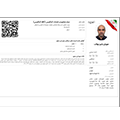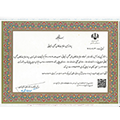Entering Iran’s Market: Setup, Strategy, and Partnerships
Why Iran Matters for Emerging Businesses
Iran, with its population of over 85 million, abundant natural resources, and a growing base of skilled professionals, presents a unique opportunity for entrepreneurs and international investors. Despite political and economic complexities, businesses that understand the local market, legal frameworks, and partnership opportunities can unlock substantial long-term growth.
Entering the Iranian market isn’t just about registration it’s about strategic alignment with local realities. From legal compliance to partnership building, every step requires contextual intelligence and a well-mapped entry playbook.
Company Setup: First Legal Steps That Matter
The first step to entering Iran’s business ecosystem is company registration. Foreigners are legally allowed to establish 100% foreign-owned companies under Iranian commercial law, with the most common structure being a Private Joint Stock Company.
Key requirements include:
- A unique company name (approved by the Companies Registration Office)
- Defined capital structure (often in IRR, but convertible to foreign currencies)
- At least two shareholders and a designated local representative
- A registered business address in Iran
- In many cases, companies also apply for an FIPPA License (Foreign Investment Promotion and Protection Act), which provides:
- Protection against expropriation
- Rights to repatriate profits
- Access to international arbitration in case of dispute
- Registering through local lawyers or consulting firms is recommended, as regulatory nuances may differ by industry.
Regulatory & Compliance Strategy: Navigating the Bureaucracy
Iran’s regulatory environment can be complex for outsiders, especially due to:
- Changing trade sanctions
- Banking restrictions
- Local tax obligations
- Import/export controls
A successful strategy involves:
- Staying up to date with Central Bank and Ministry of Industry regulations
- Building relationships with trade chambers and legal advisors
- Understanding local tax codes and incentives
- Adapting IP and trademark strategies to Iranian law
Many companies adopt a compliance-first mindset, ensuring that documentation, reporting, and tax matters are aligned from day one to avoid future penalties.
Partnership Development: Local Allies as a Growth Catalyst
In Iran, having a reliable local partner can determine the success or failure of a market entry. Whether in manufacturing, tech, or services, local partners offer:
- Access to informal networks and procurement systems
- Help navigating regulatory approvals
- Cultural translation and trust-building
Three common partnership models include:
Joint Ventures: Co-owned legal entities with shared profit/loss
Agency Agreements: Local agents acting on behalf of the foreign brand
Strategic Alliances: Non-equity partnerships focused on market expansion or licensing
Due diligence is critical. Vet potential partners thoroughly, considering reputation, financial stability, and alignment of long-term goals.
Market Adaptation: Tailoring Your Strategy for Iran
Iranian consumers and businesses have unique preferences. A one-size-fits-all approach often fails. Success lies in:
Localizing branding and messaging
Adapting pricing models to the economic realities of Iranian buyers
Offering Persian-language support and digital touchpoints
Understanding cultural sensitivities and customer behavior
Digital platforms like Aparat, Digikala, and Snapp show the growing importance of localized tech infrastructure. Integrating with these platforms can create a competitive edge.
Conclusion: Strategic Entry Pays Off in the Long Run
Despite the risks, Iran remains one of the most underappreciated markets in West Asia. Businesses that combine legal readiness, adaptive strategies, and the right local alliances stand to gain significantly. With careful planning and a realistic understanding of the local landscape, entering Iran’s market can become a sustainable strategic move.






